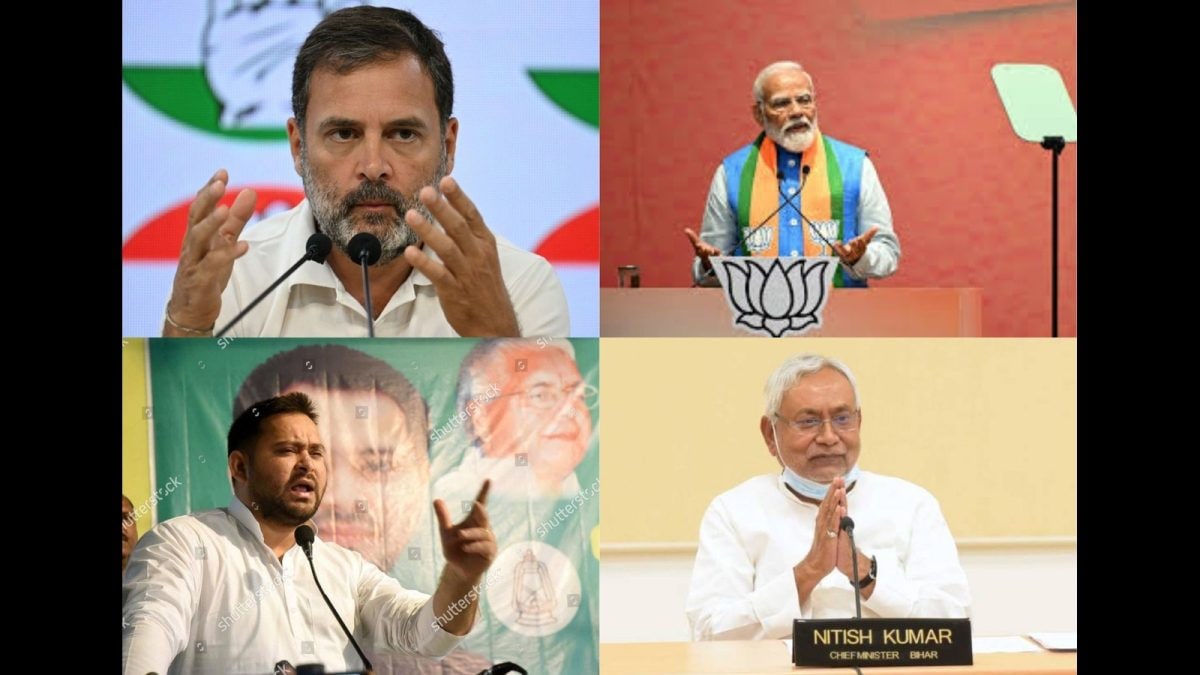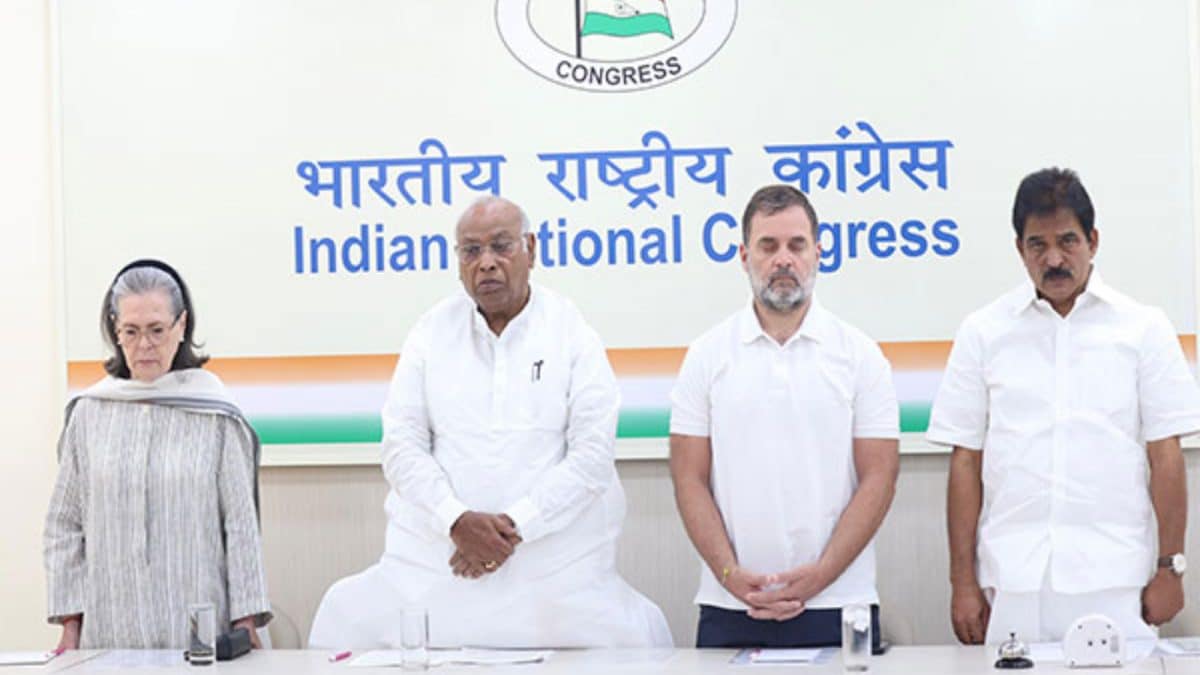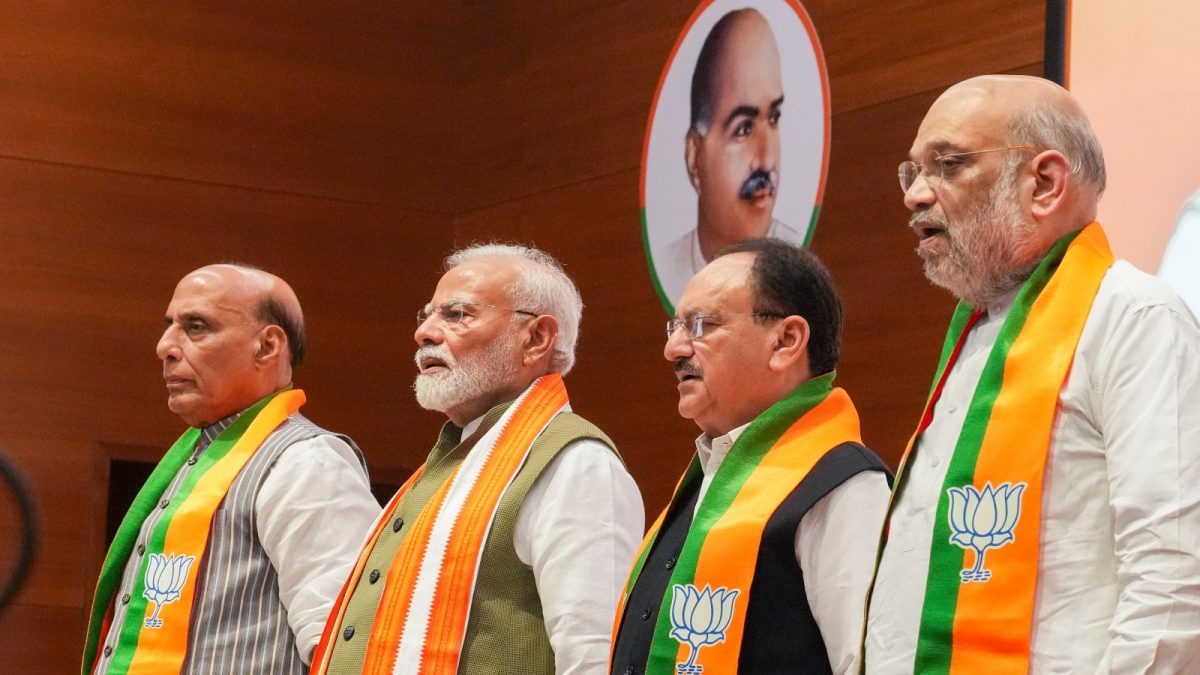Last Updated:
The verdict provides BJP with massive momentum heading into future state elections while underscoring the enduring complexity of Bihar’s electoral calculus

The Bihar election has dramatically altered the internal dynamics of the NDA, affirmed Nitish Kumar’s political longevity, and delivered a harsh lesson to the Congress. File image
The results of the Bihar assembly elections have delivered a shockwave across the national political landscape, offering a complex verdict that both reinforces national trends and establishes powerful new regional dynamics. Far from the neck-and-neck finish projected by many exit polls, the National Democratic Alliance (NDA) secured a decisive victory, crossing the majority mark comfortably.
The final count reveals five major, interlocking takeaways that will define the political strategies of all parties in the crucial years leading up to the 2029 general election.
1. BJP Emerges as Bihar Senior Partner
The most significant shift in Bihar’s political power matrix is the unprecedented rise of the Bharatiya Janata Party (BJP) to become the state’s largest party. Historically playing a junior role to the Janata Dal (United), the BJP has now effectively seized the commanding position.
The party’s success is directly attributed to the unwavering support generated by Prime Minister Narendra Modi’s personal appeal, the effectiveness of central welfare schemes, and a meticulously managed grassroots campaign. This success provides the BJP with immense leverage in the new government and cements its dominance in the crucial Hindi heartland. The performance underlines a key strategic win for the BJP, proving that it can grow its footprint significantly even in states where it lacks a long-term, charismatic regional face, largely by leveraging the formidable “Modi Factor”. This elevation confirms the BJP’s long-term goal of leading the NDA coalition in Bihar, changing the established hierarchy forever.
“The people of Bihar have voted for a developed and prosperous Bihar. During the campaign, I had urged Bihar to ensure record voting. They broke all records. Bihar has given its biggest ever support to NDA since 2010,” Prime Minister Narendra Modi said. “We are servants of the people. We keep making people happy with our hard work and we have stolen the hearts of the people. And that is why entire Bihar has said ‘Phir ek baar NDA Sarkar’…”
2. Nitish Kumar’s Masterful Comeback and Leadership Secured
Contrary to widespread speculation regarding anti-incumbency and questions about his health and political fitness, Chief Minister Nitish Kumar and the JD(U) have engineered a remarkable political comeback. The victory decisively ends the narrative of “Nitish Fatigue” that the opposition attempted to push throughout the campaign.
The opposition had strongly focused on portraying Kumar as a tired, ailing leader whose long tenure had stagnated the state’s progress. However, the mandate indicates that a significant portion of the electorate, particularly women and beneficiaries of his long-running governance model—especially his focus on law and order and social reform—remained loyal. By securing a clear victory alongside the BJP, Nitish Kumar has firmly secured his leadership position within the state, silencing critics within and outside the NDA who questioned his ability to deliver a win. The result is a personal vindication for Kumar, demonstrating that his “sushasan” (good governance) narrative, when combined with the BJP’s organisational and central strength, remains a winning formula.
3. Congress Collapses Despite Rahul Gandhi’s National Narrative
The election proved to be a disaster for the Mahagathbandhan’s primary national ally, the Congress. The party failed spectacularly, struggling to win even a handful of seats. This performance directly contradicted the aggressive national messaging pushed by party leader Rahul Gandhi during the campaign.
Gandhi’s decision to focus his final pre-poll messaging on a nationwide “vote theft” narrative, alleging widespread electoral malpractice in states like Haryana, failed to resonate with the Bihar electorate. Voters, focused on tangible local issues such as employment and development, treated the “vote chori” charge as a political distraction or, worse, a sign of pre-emptive defeatism.
The collapse of the Congress is also symptomatic of severe internal dysfunction. Issues ranging from the inaccessibility of Delhi-based leaders, corruption allegations over ticket distribution, and the failure of central strategists to heed local ground intelligence led to a complete breakdown of the party’s machinery. The results show that the Congress’s reliance on its national leadership and imported narratives remains deeply inadequate for challenging powerful regional alliances and the BJP’s sophisticated state machinery.
4. Prashant Kishor’s Jan Suraaj Party Fails to Convert Hype into Votes
One of the most anticipated elements of the election was the electoral debut of poll strategist Prashant Kishor’s Jan Suraaj Party (JSP). After an intensive and highly visible campaign built on a grassroots padyatra (foot march) across the state, the JSP failed entirely to translate its popularity and media hype into electoral success.
Exit polls had correctly predicted the JSP’s rout, demonstrating a clear gap between the visibility of a civil society movement and its ability to win in Bihar’s complex caste- and community-based electoral system. While Kishor’s campaign successfully highlighted issues of development, corruption, and the need for new political faces, the party lacked the deep-rooted cadre, established caste arithmetic, and financial resources necessary to compete with the NDA and the RJD-led alliance. This outcome confirms the difficulty of translating popular discontent into political power without adhering to the entrenched structural realities of Indian, and particularly Bihari, electoral politics.
5. AIMIM’s Limited Disruption and the Limits of Minority Mobilisation
The All India Majlis-e-Ittehadul Muslimeen (AIMIM), led by Asaduddin Owaisi, defied initial exit poll predictions of a complete rout. While the party did not secure a major breakthrough, it managed to maintain a respectable presence in the crucial Seemanchal region, confirming its ability to act as a regional spoiler.
The party’s performance, winning a few seats, validates its presence as a persistent factor in Bihar’s northern districts. However, the final numbers suggest that the Mahagathbandhan’s counter-narrative—that a vote for AIMIM splits the anti-NDA vote—was largely effective in containing the party’s growth beyond its traditional pockets. The results demonstrate that while AIMIM can disrupt the minority vote, its influence is geographically restricted, preventing it from becoming a truly statewide force capable of altering the overall mandate.
In summation, the Bihar election has dramatically altered the internal dynamics of the NDA, affirmed Nitish Kumar’s political longevity, and delivered a harsh lesson to the Congress regarding the limitations of its central command and national narratives. The verdict provides the BJP with massive momentum heading into future state elections while underscoring the enduring complexity of Bihar’s electoral calculus.

Pathikrit Sen Gupta is a Senior Associate Editor with News18.com and likes to cut a long story short. He writes sporadically on Politics, Sports, Global Affairs, Space, Entertainment, And Food. He trawls X via …Read More
Pathikrit Sen Gupta is a Senior Associate Editor with News18.com and likes to cut a long story short. He writes sporadically on Politics, Sports, Global Affairs, Space, Entertainment, And Food. He trawls X via … Read More
November 14, 2025, 20:22 IST
Read More






